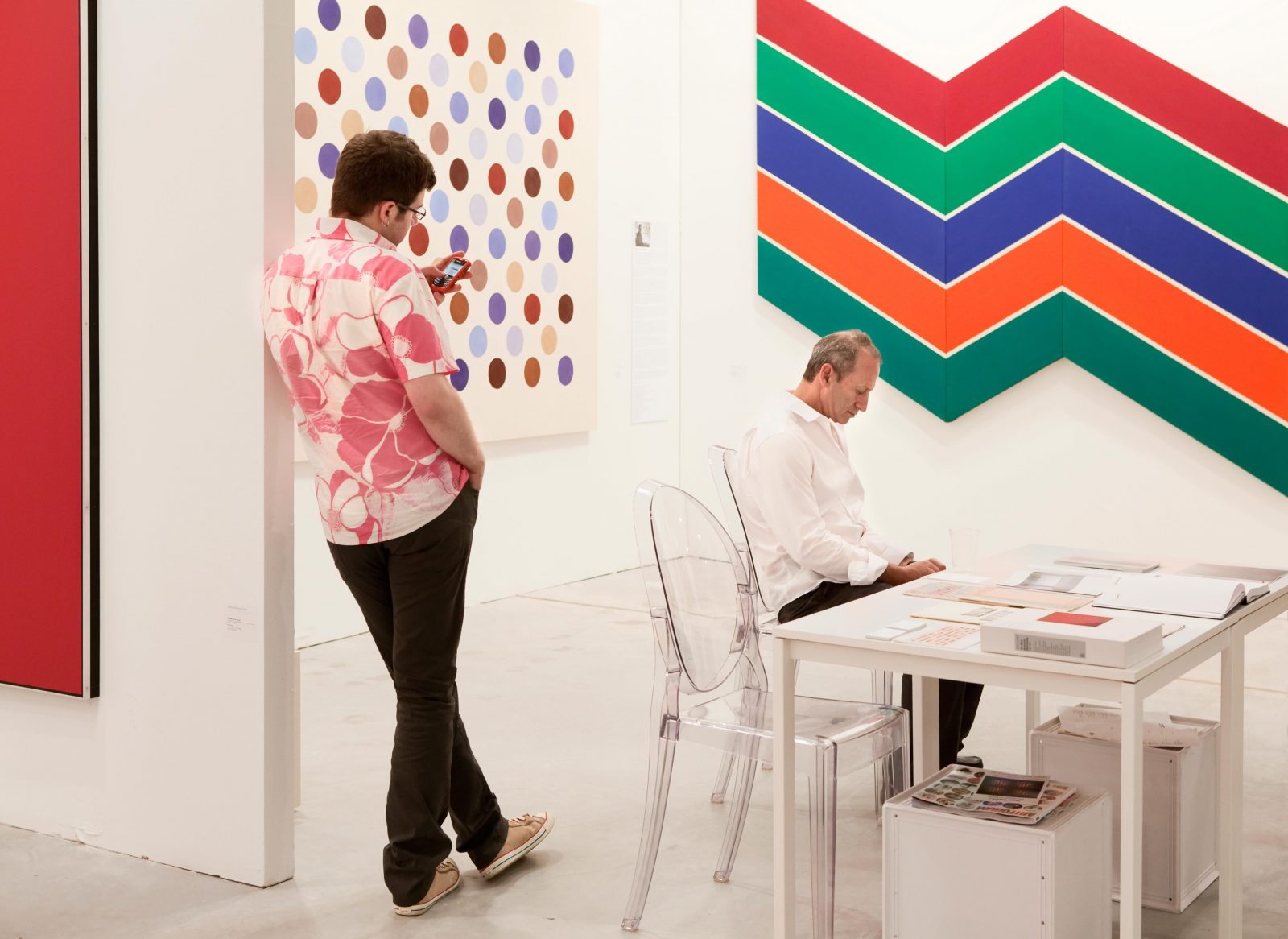It was with a shock of recognition that I first saw Andy Freeberg’s photographs of art fairs, since I had made some pictures along similar lines myself as a way to illustrate the effects of the recession on the art market.
Showing bored and solitary dealers in art fair booths was a very direct way to do it. These may be seen as equivalents of other recession photographs of bankrupt businesses, overstocked goods (thousands of cars without buyers standing in a factory lot, for example) and of the unemployed themselves. Yet there are two immediate problems with such depictions if we want to take them seriously as evidence rather than just as metonymic amusement. The first is that the art market (outside of the auction houses which have, at least, to declare their figures, if not the manipulations that produce them) is highly secretive, and we have little idea how it has been affected. In the pages of the Art Newspaper you will find reassuring statements from dealers about the liveliness of the market but these, of course, are pieces of propaganda from interested parties, and are made to as much create as describe a situation. There is some evidence that investors currently feel more comfortable about putting their money into objects (gold or wine, notably) than into immaterial stocks and shares, and that art may benefit from that effect, but fundamentally the matter remains deeply and deliberately obscured.
[ms-protect-content id=”8224, 8225″]
The second is that photographs and economic data are deeply antithetical elements, and to pitch them into unmediated proximity is to court trouble. It would be perfectly possible to take such pictures in a boom, just as the Bechers took photographs of derelict industrial buildings without variation through the ups and downs of the economic cycle. Photography made by humans is about selection from a changing, complex and contingent field, and its description of the play of light over objects has little affinity with data visualisation. So we may choose to look to Freeberg’s photographs for confirmation of what we think we know about the current state of the art market, but the actual links are difficult to establish.
Another way of thinking about such pictures is to notice the contrast between the mundane character of the work portrayed – dealers and their assistants as office workers tied to the mobile and the laptop – and the spectacle of the art around them, in which objects vie for attention with displays of oddity and nudity, or sometimes echo in dark but dramatic Adornian form the monochrome instrumentality of the working world. Like any shop selling interior furnishings, the booths are both sets, simulations of the places the goods are destined for, and places where people live, eat and work. As in the shop, the staff are on display, and their images are part of the sales environment. Freeberg presses humorously on the visual parallels between dealer and art work, the image of each being carefully honed, in the hope that it is not the contrast between expressive art and the shop that stands out but a false affinity; that I, the dealer, in showing this distinguished work have exercised my own distinct taste, that by being a fully rounded and autonomous individual, I have also achieved economic success; and that you the client, may by buying this work, do the same.
In these images, that relationship appears to fail, and the dealers are shop proprietors without customers, or (given the question over the use value of what they sell) priests without a congregation. In an economic world in which the leading products have for a long time now been immaterial, and in which (as Boltanski and Chiapello have it in their book The New Spirit of Capitalism) your main commodity is yourself, your image and your networks, the social distinction that attaches to the exceptional object and its display in plasterboard booths may appear old-fashioned. This is all the more true when it seems that the sacrifice made in time, energy and materials to make, transport and display those objects is met with indifference.
During the boom, contemporary art was often treated as pure investment, and buyers were indifferent to the character of the objects that they traded. Recently, a trade in art derivatives has been established, so investors can bet on the price of objects that do not, as yet, exist. The logic of maximising profit making is indifferent to objects (and persons), and it is quite possible to imagine art as an intangible good, weightlessly traded without the impediments of materials and their attendant costs of packing, insurance, preservation and conservation.
Photography, in its depiction of contingent appearances, lies at the opposite pole of such abstraction. As a fine print (perhaps displayed in an art fair booth), it aligns contingency and object. As a digital file, it holds the antinomies in a single package, the synthesis of the two being promised only in the machine analysis of photographic contents, in which every detail will be prised from its obdurate silence and bent to use. Photoshop can, after all, a little unreliably, recognise faces.
[/ms-protect-content]
Published in Photoworks Issue 15, 2010
Commissioned by Photoworks

